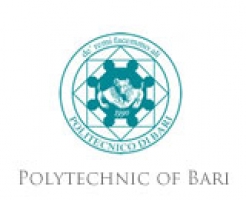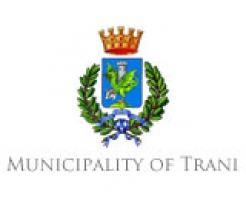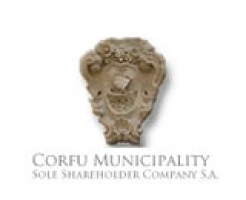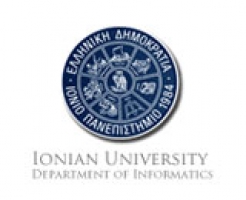REPORTS
University of Salento - Progress Report [January-June 2013]
Data analysis from Trani Cathedral
The analysis of the data obtained through the measurements of the Trani Cathedral bell tower and construction of a validated model.was conducted in collaboration with the LP.
The structural identification of the bell tower of the Cathedral of Trani has been carried out by means of the techniques of the OMA (Operational Modal Analysis). The OMA methods, based on output-only measured data, used are: the EFDD (Enhanced Frequency Domain Decomposition) that operates in the frequency domain, and the SSI (Stochastic Subspace Identification) technique that operates in the time domain. In the examined case, the extraction of the modal parameters from ambient vibration data was carried out using Artemis Extractor software (Artemis).
The frequency values estimated by means of these techniques are summarized in Table 1, together with the average values and the standard deviation evaluated for the all the examined tests for each procedure. Figure 1 also shows the first two frequencies mode shapes for one of the test. It can be easily observed that the first two modes correspond to the first flexural mode along the z and x axis and that the first two frequency values are quite close due to the symmetry of the tower section.
The experimental investigation was supported by the development of a 3D finite element model. The tower was modeled using 197073 brick elements that represent the outer surfaces of the wall and its reinforced concrete core, assuming a perfect adherence between these materials. Moreover, 350 spring elements, were added to take into account the interaction between the tower and the church. In addition to the mass of the brick elements, four lamped masses (of 4000 kg each) were considered at the corners of the 4th belfry that are representative of the bells mass.
The model was updated minimizing the differences between theoretical and experimental identified natural frequencies (the average value of all the tests); the strategy used for updating the unknown parameters is the well-known Inverse Eigen-Sensitivity.
The comparison of the experimental data with the updated FE model is shown in Table 2, in which the first five estimated experimental frequencies, the first five frequencies of the updated model, the percentage error and the MAC coefficients are shown. It is possible to note that the model natural frequencies are very close to the experimental ones and the correlation(MAC) between mode shapes shows very good agreement for the bending mode shapes (excellent agreement for the first two modes).
A complete scientific relation about this activity will appear on the paper ‘Dynamic identification and finite model updating of Trani cathedral’s bell tower’, authors M. Diaferio, D.Foti, N.I. Giannoccaro, F. Tucci that will be published on the Proceedings of the 4th International Conference on integrity, reliability & failure tha will be held in Madeira (Portugal), 23th-27th June 2013.
Data analysis from Announziata Tower in Corfu
The analysis of the experimental results was performed. A specific software (ARTeMIS) was used for the extraction of the modal parameters from ambient vibration data. A preliminary analysis was conducted on the time series of the accelerometers for evaluating the effects of the urban traffic and the functionality of the accelerometers considering the difficult environmental conditions. The preliminary analysis permitted to individuate as not properly running some accelerometers.
A statistical based analysis of the tests using the classical methods of the operational modal analysis (OMA) has permitted to identify the frequencies of the building and the modal shapes with an extreme repeatability for all the tests.
Two different OMA methods were used for each analysis (Artemis, 2012): the Enhanced Frequency Domain Decomposition (EFDD) in the frequency domain and the Stochastic Subspace Identification (SSI) using Unweigthed Principal Components (UPC) in the time domain. The estimated frequencies with the two methods for three different tests named a, b, c are reported in Table 3. The extreme repeatability of the first six estimated frequency is evident from the Table.
The first and second frequency were identified as the first couple of flexional modes directed respectively on the x and y axis. A graphic of the first two experimental identified mode shapes is shown in the figure laying on this page for the test a, considering the SSI method.
The finite element (FE) model of the Announziata tower has been realized considering the plant as perfectly squared (length 3.5 m). The model has two typologies of elements: the ‘frame’ and the ‘shell’. The frame, prismatic linear elements, have been used for structural components such as the stone columns supporting the bell tower openings and the bells supporting framework and they assume the corresponding materials properties. The shell elements have been used for modeling the masonry walls, such as the vertical walls; for the vaults caps specific shell elements with 4 nodes have been used for combining the membrane behavior with that of a flexible plate.
An adequate mesh was created in such a way to model the real behavior of the structural elements. The preliminary mesh was composed by 362 shell elements and 10 frames for a total of 404 nodes. In order to increase the reliability of the numerical model, the mesh was refined dividing opportunely the starting elements (the thickened model has 10541 elements and 10668 nodes)..
The parameters selected for the model updating procedure are the stiffness k of the springs, the Young’s modulus Ei and the densities ρi
of the different materials. The strategy used for updating the unknown parameters is the Inverse Eigen-Sensitivity.
The comparison of the experimental data with the updated FE model is shown in Table 4, where the first six estimated experimental frequencies, the first six frequencies of the updated model, the percentage error and the MAC coefficients between theoretical and experimental frequencies are shown. It is possible to note that the model natural frequencies are very close to the experimental ones and the correlation (MAC) between mode shapes shows a good agreement especially for the bending mode shapes.
A complete scientific relation about this activity will appear on the paper ‘Non-destructive characterization and dynamic identification of an historical be tower’, authors A. Carone, D.Foti, N.I. Giannoccaro, R. Nobile that will be published on the Proceedings of the 4th International Conference on integrity, reliability & failure that will be held in Madeira (Portugal), 23th-27th June 2013.
Back









